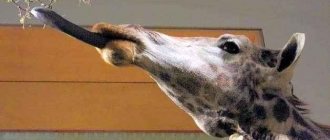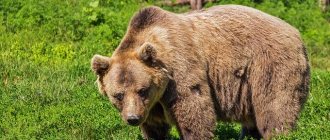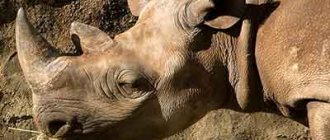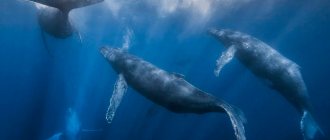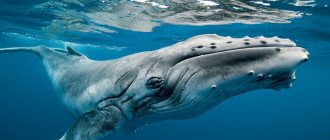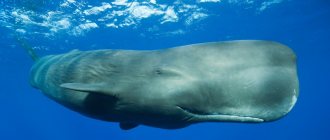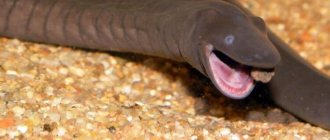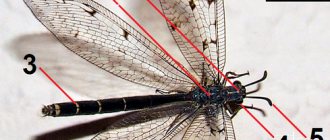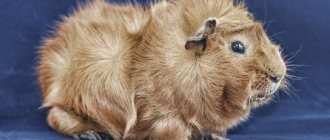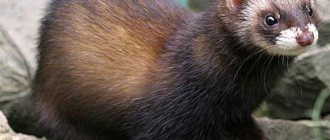Pinnipeds are divided into three families. These are subspecies of walruses, eared seals and true seals. Today they number 33 species. Pinnipeds also include sea lions and seals. These sea mammals can stay on land for a long time. There is a classification that classifies them as pinnipeds, and another classifies them as “predatory animals”. The lifestyle of pinnipeds is closely connected with the oceans and seas.
The body structure of animals corresponds to their lifestyle associated with swimming and diving. The limbs have swimming membranes called flippers. The dental system contains canines and incisors.
The structure of pinnipeds
The body shape of pinnipeds resembles a spindle. The body length is 1.3-6.5 meters, and the mass lies in a wide range from 35 kilograms for fur seals to 6500 kilograms for elephant seals.
In pinnipeds, the limbs are flippers with five fingers, between which a membrane is stretched. They are hidden in the skin of the torso. The forelimbs protrude from half of the forearm, and part of the lower leg with the foot is visible in the hind limbs. The shoulder, forearm, thighs and lower legs of pinnipeds are shortened.
The limbs of pinnipeds are intended only for movement, both in water and on land. Animals have very short tails. The hair on the body is short and smooth.
The head is flat with widely spaced cheekbones. Dental incisors are designed to capture prey. In pinnipeds that feed on fish, the teeth remain intact, but in those that feed on benthic organisms, they deteriorate and fall out. Almost all pinnipeds have a thick fatty layer under the skin (7-10 cm thick).
Representatives from the order “pinnipeds” have good eyesight. Thanks to the ability of the pupil to greatly expand, they see perfectly in the aquatic environment.
Seals and walruses can distinguish some colors. Animals have vibrissae on both sides of the front part.
Squad Predatory
There are about 240 species of modern predatory animals.
They all have a slender, flexible body, powerful legs, a small head with a short muscular neck (Fig. 13). Rice. 13. Squad Predators
All representatives of the order are united by similarities in the structure of teeth and in the method of feeding. Powerful long fangs are used for grasping, holding and killing prey (Fig. 14). The carnassial teeth characteristic of only these animals are of particular importance (Fig. 15).
Rice. 14. Fangs of predators
Rice. 15. Carnassial teeth
A small number among the representatives of the order are herbivorous species, such as the giant panda, or omnivorous species, such as bears (Fig. 16). The largest representatives of the order are bears up to 3 meters long and weighing up to 1 ton. The smallest animal is the weasel (Fig. 17), up to only 13 cm long and weighing up to 100 g.
Rice. 16. Bears
Rice. 17. Weasel
Predatory animals are widely distributed across all continents of the globe, excluding Antarctica. They live in a wide variety of conditions. The order includes 7 families, of which we will consider bears, dogs, mustelids and cats.
The family Canidae, or Canidae (Fig. 18), includes dogs, wolves, foxes, raccoon dogs, jackals and arctic foxes. These are medium-sized animals with an elongated muzzle, long legs and non-retractable claws.
Rice. 18. Family Canidae
They are usually active at night or twilight. The color is plain or spotted; dogs eat animal food. Prey is watched, tracked and pursued using a developed sense of smell. A wolf, for example, can, if necessary, run at a speed of 50–60 km/hour, and on average runs about 20 km per day. Canids breed once a year, giving birth to 4 to 6, and sometimes up to 15 blind, sedentary cubs (Fig. 19).
Rice. 19. Fox cub
Features of pinnipeds
Pinnipeds obtain food in water. They mainly eat fish, crustaceans, and mollusks. Only leopard seals eat seals and penguins in their diet.
Animals mate, reproduce, molt, and escape from predators on the shore. They lead a herd lifestyle. On the ice or shores you can see entire rookeries of pinnipeds. Although pinnipeds have a weak sense of smell, they find the location of their young by smell. In water, the nostrils close and the sense of smell does not function.
Pinnipeds have normal hearing. They hear worse in the air than in water. The skin of animals is thick and dense.
harbor seal
(Phoca vitulina) is often found off the sea coasts of temperate regions of the Northern Hemisphere. It never swims far from land and sometimes settles in fresh lakes and large rivers.
This is a relatively small animal. The body length of an adult male is approximately 1.5 m and weight is 45 kg; the female is about the same. The head is round, the eyes are large, the muzzle is as if chopped off, the body is stocky, with a short neck. The color varies from yellowish-gray with dark brown spots to almost black with white spots.
The harbor seal does not form large colonies; it spends more time on the shore than other seals and cannot sleep in the water. Families consisting of a male, several females and their cubs of different ages often use the same place for overnight stays, which becomes their group territory. These are very friendly animals that are easy to tame.
Cubs (sometimes twins) are born in early spring. Newborns of the Far Eastern form are covered with fluffy white fur that lasts for 3–4 weeks (the pup stage). In other forms, this fur sheds immediately, sometimes even before birth. The baby's cry resembles the bleating of a lamb. His mother feeds him for about 5 weeks, after which he learns to forage for food himself. The common seal feeds on a variety of fish (capelin, navaga, herring, flounder, pollock, etc.), as well as squid and octopus.
The species' range extends along both Atlantic coasts from southern New Jersey and the northern Mediterranean to the polar ice boundary, and along the Far Eastern and American coasts of the Pacific Ocean - from Kamchatka in the north to Baja California in the south.
The Ungave subspecies of the common seal (Pv mellonae) lives only in Upper Seal and Lower Seal lakes (translated as Upper and Lower Seal) 150 km east of Hudson Bay. How it penetrated these inland bodies of water remains a mystery; perhaps their settlement occurred during the retreat of the glacier.
Harp seal, or coot
(Pagophilus groenlandica), larger than the ringed seal. The length of a mature male exceeds 2 m, and the weight reaches 360 kg; females are almost the same in size, but differ in color. Adult males are yellowish-white, with a wide dark brown stripe on the side, which connects with the opposite one on the withers and in the rump area, forming a pattern reminiscent of a saddle or harp. The muzzle is also black and brown. Females are light gray, and they either have no dark stripes at all or are blurry.
The female usually gives birth to one cub in March, rarely twins. The newborn is covered with snow-white soft fur (the white stage), which after about a month, when the baby is ready to start swimming, is replaced by coarse light gray fur (the serk stage). By the beginning of May, the mother stops feeding her offspring, and the young seal begins to get its own food. It reaches sexual maturity at four years of age; by this time the male has a characteristic pattern.
The harp seal has a more pronounced herd lifestyle than all other seals, and its population is also the highest: it is estimated at 4 million individuals. Some herds contain up to 500,000 animals. This seal is constantly nomadic, moving through open water along the edge of ice fields. Its range covers the North Atlantic and Arctic from Canada to Severnaya Zemlya and extends south to the latitude of Newfoundland; the American population breeds on the ice just north of this island and the Gulf of St. Lawrence. In the spring, when the ice begins to break, huge herds migrate north, reaching the shores of Greenland.
This animal swims at speeds of up to 32 km/h, dives to depths of up to 60 m and can remain underwater for up to 20 minutes. It feeds on fish, mainly cod, and some crustaceans.
Monk seals
(Monachus) – medium size; The length of the male is up to 2.5 m. The color ranges from dark brown to grayish-brown. They live in warm seas, where competition with other seals is minimal. Animals live in small family groups or colonies. Newborn cubs are covered with long and soft blackish fur.
The Caribbean or tropical monk seal (M. tropicalis) used to be common in the West Indies. Now he is close to extinction. The Mediterranean monk seal (M. monachus) is still quite common in the Mediterranean, Black and Adriatic Seas, and around Madeira, the Canary Islands and other islands off the west coast of Africa. The Hawaiian monk seal (M. schauinslandi) lives in the western part of the Hawaiian archipelago.
California sea lion
(Zalophus californianus) is the most famous of all seals and is the one commonly seen in zoos and the circus ring. His coat is shiny and rather coarse, without soft undercoat, the color is chocolate brown, the ears are small, and the tail is very short. Sizes are medium; the mass of large males reaches 300 kg with a body length of approx. 2.5 m; females are smaller and more graceful - up to 1.8 m long.
In the spring, the cleaver gathers around him a group of pregnant females, but this harem is never large, and the cleaver does not guard it very jealously, even finding time to feed. Soon after arriving at the rookery, females give birth to young. They are born sighted, covered with lush fur and able to move independently. The mother feeds the baby for 3–4 months. The lifespan of these animals is approximately 20 years.
The California sea lion's main food source is squid, although it also eats fish.
Khokhlach
(Cystophora cristata) is a bluish-gray animal with numerous yellowish-white spots of irregular shape. A sexually mature male (over 2.5 m long) has a kind of leathery sac on his muzzle that stretches from the tip of his nose to the top of his head. When excited, the animal inflates it, so that the entire upper part of the head becomes like a melon. Female length approx. 1.8 m. The front flippers of the crested deer are small, and the rear ones are wide, fan-shaped, with a very large claw on the outer toe.
These seals do not gather in large herds, but form family groups consisting of a large male, two or three females and pups of different ages. The mating season is in March. Males fight for females, but their fights are noisy rather than violent: they inflate their bags and then forcefully release the air from them, emitting a roar that can be heard over a radius of several kilometers. The baby is born about a year later. Its soft snow-white fur is shed during the first molt, which occurs in the womb, and it is born covered with short and rather coarse ash-gray hair. Sexual maturity occurs in the fourth year, but the crested cat matures only at the age of five.
This pelagic animal rarely approaches land. It lives in the Arctic and often coexists with the harp seal on ice fields, but the two species stay separate: the hooded seal prefers inner pack ice, and the harp seal prefers thin fast ice.
Long-faced, gray seal, or tevyak
(Halichoerus grypus), large animal: the length of an adult male is more than 3 m and weighs up to 300 kg; female length is 2.5 m. Color varies from light gray to dark gray; Some individuals have dark spots of different sizes scattered unevenly throughout the body.
The long-faced seal never gathers in large herds; its colonies usually consist of small groups scattered over a relatively large area; each of them includes a male, three or four females and their young. At the end of August, seasoned males climb high stones to lie in the sun. Sometimes conflicts arise between them, accompanied by loud roars, for convenient places.
These seals are found on both sides of the Atlantic Ocean, at the latitude of southern Canada and the British Isles, never going further south, where the water is warmer, or north, into the ice fields. In September, females come ashore and a few hours later give birth to one calf, either simply on the beach or in grottoes under the rocks. The newborn (belek) is covered with snow-white fur and weighs approximately 14 kg; he is sighted and able to move independently. Helping itself with its hind limbs, it waddles, almost like a land animal, but after 2–3 days it loses this ability. In the first days, the mother does not leave the baby, she protects, caresses him and even scratches his back. 10 days after giving birth, the female is again ready for mating. The cub grows quickly and at two weeks of age can already weigh 38 kg. After a month, the white fur gives way to gray. At this time, the mother stops feeding the baby and loses interest in him. For two weeks it survives mainly on accumulated fat, but soon hunger drives it into the water, where it quickly learns to find food. The long-snouted seal feeds mainly on fish (cod, flounder, salmon), as well as mollusks and crustaceans.
Although males fight fiercely for their territories, they do not create lasting harems, and if a female goes to a neighbor, the former partner does not show any signs of jealousy.
Lifestyle and procreation
Animals of the order Pinnipeds spend most of their lives in water; only during the period of reproduction and molting do they adhere to a solid substrate for quite a long time - ice or land, forming clusters or haulouts. Since on land they are very clumsy and vulnerable to predators, here they were forced to develop ways to protect themselves and their offspring.
Mating usually occurs in spring or early summer. After a period of intensive feeding, the animals gather at a selected reproductive rookery. Most true seals mate on ice, while eared seals mate in water. Walruses mate in the water, and make rookeries on the ice or on the shore near the water.
Many pinnipeds, such as sea lions, create harems in which there can be up to several dozen females per male.
Fur seal rookery
Males often come to land several days earlier than females and occupy a territory on the rookery. Pregnant females from last season appear on the ground almost before giving birth. There is only one puppy in a litter; twins are very rare. The newborn is already covered in fur, fluffier than the next coat, and is often colored differently than adults. In most true seals, this fur changes within 2-3 weeks. Eared seals molt 2-3 months after birth.
Milk feeding can last, depending on the type of seal, from several days to several weeks. At the end of lactation, females enter the rutting period and mate, and then stop feeding their cubs and they are forced to begin an independent life. Only in Steller sea lions the bond between mother and calf lasts longer: the baby can feed on mother’s milk until the next calf appears or even after that.
In all seals, the fertilized egg develops to the state of a hollow ball - a blastocyst, and then lies dormant in the uterus until the feeding of the born pup is completed. After this, the blastocyst is implanted into the wall of the uterus and forms the placenta, necessary for further development. This developmental delay helps to minimize the period between birth and mating.
Some pinnipeds remain in rookeries all year round, but most, after breeding and molting, disperse throughout their range or migrate thousands of kilometers. At this time, they gain fat reserves necessary for the next breeding season.

